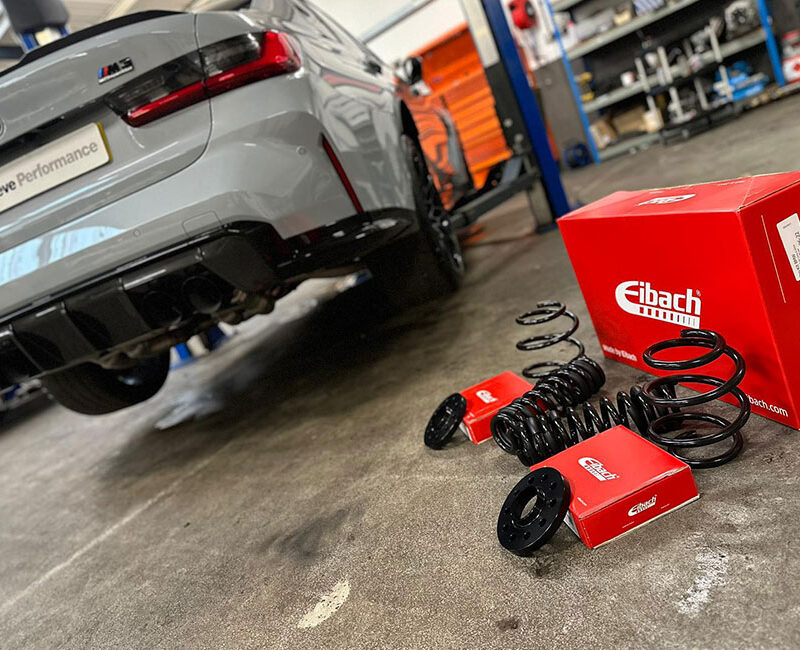Suspension Setups for the Track: A Comprehensive Overview
A proper suspension setup is crucial for maximising a car’s performance on the track. It’s not just about going fast; it’s about having control, stability, and confidence in your vehicle’s handling. This extensive guide provides an overview of suspension setups for track use, highlighting the key components, adjustments, and considerations to optimise your car for the racetrack.
Understanding Track Suspension Basics
The suspension system in a car is responsible for maintaining contact between the tires and the road, providing stability, and absorbing shocks. For track use, the suspension needs to be tuned to handle higher speeds, sharper turns, and more aggressive braking compared to regular driving.
Key Components of Track Suspension
- Springs: Stiffer springs are typically used in track cars to reduce body roll during cornering, enhancing stability and grip.
- Shock Absorbers (Dampers): Adjustable dampers allow you to fine-tune how quickly the suspension reacts to bumps and turns. The ability to adjust rebound and compression is crucial for track performance.
- Anti-Roll Bars: These bars reduce body roll during cornering and can be adjusted to alter the balance of the car between understeer and oversteer.
- Bushings: Upgrading to harder bushings can improve handling response but may increase harshness in the ride.
- Ride Height: Lowering the car’s centre of gravity improves handling. Adjustable coilovers are often used to fine-tune ride height.
- Camber, Caster, and Toe: Adjusting these wheel alignment settings is vital for optimal tire contact and handling. Negative camber is often used in track cars to increase grip during cornering.
Adjusting Your Suspension for the Track
- Balancing Grip: The goal is to achieve a balance where the car remains stable and predictable under various conditions. This often involves testing and fine-tuning at the track.
- Track Specific Adjustments: Depending on the track layout (tight corners vs. long straights), you may need to adjust your suspension settings to suit.
- Data and Feedback: Use telemetry data and driver feedback to inform adjustments. Lap times, tire wear patterns, and subjective feedback about how the car handles are all valuable.
- Consistency: A suspension setup that helps maintain consistent lap times is often more beneficial than a setup that is occasionally fast but hard to control.
Professional Setup vs. DIY
- Professional Setup: If you’re new to track driving or suspension tuning, it may be wise to consult a professional. They can provide a good baseline setup.
- DIY Adjustments: If you decide to adjust your suspension yourself, do thorough research and make small changes one at a time, testing how each affects the car’s handling.
Common Pitfalls to Avoid
- Over Lowering: Lowering the car too much can negatively impact suspension geometry and reduce overall performance.
- Ignoring Tire Feedback: The way your tires wear can tell you a lot about your suspension setup. Uneven wear often indicates a need for adjustment.
- Neglecting Maintenance: Regularly check all suspension components for wear and damage, especially after track days.
FAQs for Suspension Setups on the Track
Q: How often should I adjust my suspension settings? A: It depends on the track conditions and your personal driving style. Some drivers adjust settings for each track, while others may do minor tweaks based on weather conditions and tire performance.
Q: Can a good suspension setup compensate for less power? A: Yes, a well-handling car can often lap faster than a more powerful car with poor handling, especially on technical tracks with many turns.
Q: Is stiffer always better for track suspension? A: Not necessarily. The suspension needs to be stiff enough to reduce body roll but not so stiff that it compromises grip by failing to absorb track undulations.
Q: How do I know if my suspension setup is working? A: Consistent and improved lap times, even tire wear, and confidence in the car’s handling are good indicators of a successful suspension setup.
Q: Does a track suspension setup work on regular roads? A: Track-focused setups are often too harsh for daily driving. If you use your car on both track and street, consider adjustable suspension components to switch between setups.
In conclusion, suspension tuning is a critical aspect of preparing a car for track use. It requires a balance between various components and settings to achieve the desired handling characteristics. Whether you’re fine-tuning the suspension yourself or seeking professional help, remember that the ultimate goal is to create a car that feels like an extension of yourself, giving you the confidence to push your limits on the track.

